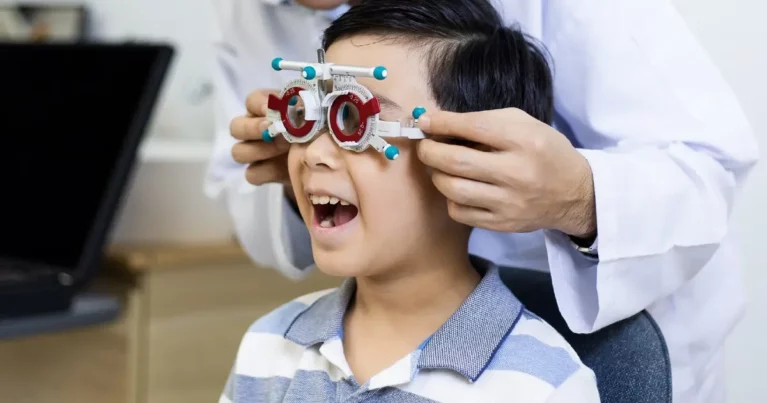
Ever felt like your eyes are playing a game of hide-and-seek, each one going its own way? It’s frustrating, right? Those moments when you want to look someone in the eye, but your eyes have different plans. We get it – the discomfort, the headaches, the self-consciousness. But what if we told you there’s a way to turn this eye escapade into a clear, confident gaze? Welcome to the world of squint surgery, where your eyes find their way back home, aligned and ready to take on the world. In this blog, we’ll discover the benefits of squint surgery. So, if you’ve ever wished for a solution to the squint struggle, you’re in the right place.
Contents
Why Surgery?
When Surgery Steps In:
Remember: Surgery isn’t the first stop; it’s the solution when the journey to clear vision needs an extra push. If you’re in a squint tangle and other fixes aren’t quite cutting it, surgery might just be your ticket to eyes that align and a world that comes into crystal-clear focus.
1. Diagnosis and Assessment:
2. Surgical Intervention:
3. Post-Operative Care:
4. Long-Term Monitoring:
Correcting a squint is a personalized journey, and the approach may vary based on the severity of misalignment and individual factors. It’s a collaborative effort between the patient, eye care professionals, and sometimes, surgical intervention to achieve optimal eye alignment and visual clarity.
Embarking on the journey of squint eye surgery isn’t just about correcting alignment; it’s a doorway to a world of positive changes and enhanced well-being. So, let’s explore the benefits of squint eye surgery:
As you consider the path of squint eye surgery, these benefits extend beyond the physical realm, influencing your daily comfort, confidence, and the way you perceive the world.
The prospect of correcting a squint without surgery is a valid consideration, and for many, it’s the first question that comes to mind. Let’s explore the possibilities:
In conclusion, while non-surgical interventions exist and can be effective for certain cases, the decision on whether squint can be corrected without surgery depends on various factors. Seeking guidance from eye care professionals is crucial to determine the most appropriate and effective approach for achieving optimal eye alignment.
As we conclude this journey into the world of squint eye and its correction, one thing stands clear—there’s a path to visual harmony and confidence awaiting you. Squint surgery emerges not just as a medical intervention but as a gateway to a life without the limitations of misaligned eyes.
At EyeMantra, we understand the significance of clear vision and the impact it has on your well-being. If you’re suffering from squint eye, Squint Surgery at EyeMantra can help. Book your free consultation now at 9711116605.
1. Is squint eye surgery 100% successful?
While squint surgery has a high success rate, individual outcomes may vary. Factors such as the severity of the squint, underlying causes, and overall eye health can influence the success of the procedure.
2. Can squint be cured permanently?
Squint surgery is designed to provide a permanent solution for many individuals. However, the success of the surgery depends on various factors, and occasional follow-up appointments may be necessary to monitor eye alignment.
3. Can squint come back after surgery?
In most cases, squint surgery is a lasting solution. However, in rare instances, a squint may reappear. Regular check-ups with an eye specialist help detect and address any potential recurrence.
4. What is the best age for squint surgery?
Actually, there is no age limit for getting squint surgery done. Squint surgery can be performed at any age. The decision is based on individual factors, and consulting with an eye specialist will determine the most suitable timing.
5. Are there any side effects or disadvantages?
Like any surgical procedure, squint surgery carries some risks. Common side effects may include temporary discomfort, redness, or swelling. Serious complications are rare and will be thoroughly discussed during the pre-operative consultation.
6. What is the cost of Squint surgery?
If the procedure involves the correction of two muscles, the cost typically falls between 40,000 rupees. In cases where three muscles require correction, the cost generally ranges around 45,000 rupees. It’s important to discuss specific cost details with your eye care provider, as prices may vary based on individual circumstances.